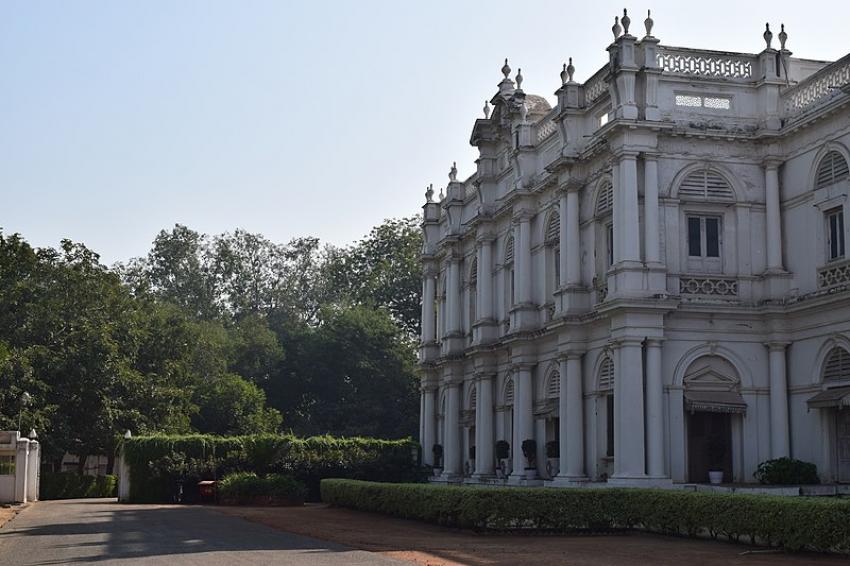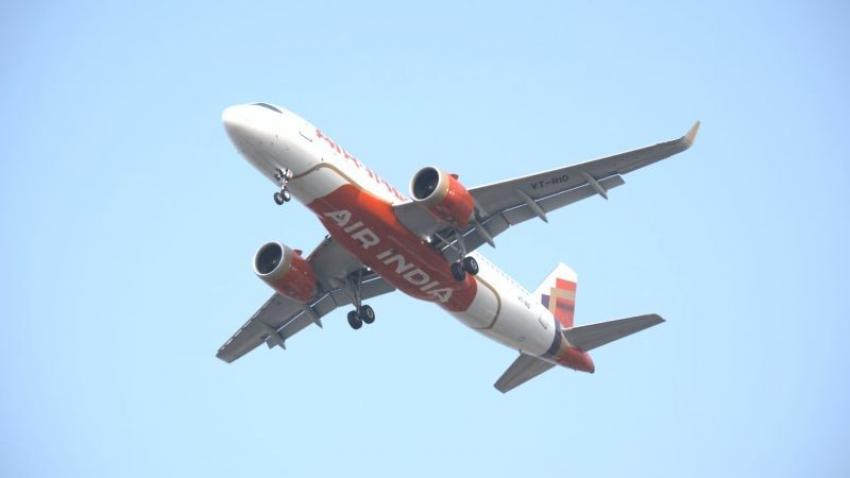NITN | @notintownlive | 04 Jan 2024, 07:54 am
 Madhya Pradesh
Madhya Pradesh
Photo credit: All images are from Wikimedia Commons
A holiday of five-seven days is all you need for a delightful winter trip through Gwalior, Shivpuri and Orchha.
Gwalior
This sprawling city overlooked by a grand fort balances its past with the present, and is an explorer’s delight.
 Photo credit: Wikimedia Commons
Photo credit: Wikimedia Commons
Devote at least a couple of hours to see the grand Gwalior fort, which shot to fame during the rule (1486-1516 AD) of Raja Man Singh Tomar. But the fort was built much before that and changed hands many times, with each dynasty leaving its mark on the fort.
 Photo credit: Wikimedia Commons
Photo credit: Wikimedia Commons
Some of the key attractions within the fort complex are Raja Man Singh’s palace, with its walls still bearing traces of the enamelled blue, green and yellow tiles; his consort Mrignayani’s palace, the Gujari Mahal (now a museum, closed on Mondays and holidays, ticketed entry); the over 90-feet tall Teli Ka Mandir, likely built in the eighth century; Sas Bahu temple dedicated to Vishnu; etc.
Do not miss the 15th century statues of Jain tirthankaras cut into the rock along the slope past the fort’s Urwahi gate.
Partly converted to a museum, the mid-19th century built Jai Vilas palace is an amalgamation of European architecture and a visual treat. There are over 41 galleries showcasing rare artefacts as well as interesting objects related to the life and times of the Scindia royal family.
 Photo credit: Wikimedia Commons
Photo credit: Wikimedia Commons
The grand Durbar Hall with its chandeliers and pure gold décor, the Banquet Hall with its silver train (which carried food and drinks along the table), the Silver Buggy gallery, are some of the must see-s. The museum is open Tuesday to Sunday, 10am to pm. Ticketed entry.
Tucked away in a corner of the city is Tansen’s tomb. One of the ‘nine jewels’ in the court of Emperor Akbar’s court in the 16th century, his contribution enriched the genre of Indian classical music. His simple tomb lies within a landscaped garden. Nearby is an ornate tomb of Sufi saint Mohammed Ghaus, built in the 16th century.
 Photo credit: Wikimedia Commons
Photo credit: Wikimedia Commons
Temper your historical and archaeological quests with some delightful dishes typical of Gwalior.
From old world eateries to modern cafes and diners, the city is known for its diverse food preparations.
While the kachori served with a spicy curry and chutney is an all-time favourite breakfast and snacks item, you may also try the bedai puri (usually a monsoon snack, made of lentils and spices and served with potato curry); while poha is a widely consumed dish, you may try the karela chaat, the savoury dish topped with a locally available variety of bitter gourd, according to a food website; for those with a sweet tooth, there are laddoos, fruity flavoured pethas, and jalebi made with paneer.
Param Food Complex is one of the best places to go to if you are keen to try diverse cuisines, such as North Indian, South Indian, Chinese, Continental, etc. But do note, they serve only vegetarian food. Another local favourite is Kwality Restaurant; open for lunch and dinner, it serves both vegetarian and non-vegetarian food.
Gwalior is a shopper’s delight too.
Chanderi and Maheshwari sarees, jewellery and dress accessories, handcrafted leather goods, are some of the products which you may buy for yourself or as gifts. While there are malls and government emporiums, it is a delight to browse through local markets, such as Sarafa Bazar, Patankar Bazar, Topi Bazar, Bada Naya Bazar, etc.
Shivpuri
After a fast paced tour of Gwalior, Shivpuri is a perfect place to relax and enjoy nature with bits of history thrown in.
Spread over an area of nearly 355 square km, Madhav National Park was once a royal hunting ground. It was designated as a national park in 1958. A combination of forests, lakes and meadows make it one of the most picturesque parks of central India.
On the southern end of the park are the lakes – Madhav Sagar and Sakhya Sagar; the latter home to many marsh crocodiles. In winter, you may catch migratory birds at the lakes.
 Photo credit: Wikimedia Commons
Photo credit: Wikimedia Commons
During the park round, you may stop at a former hunting lodge, the George Castle located at the highest point inside the forest.
The national park has two entry gates (one on the Old Jhansi Road and the other on the Shivpuri-Gwalior stretch of the Agra-Mumbai Road). Madhav National Park is open round the year, from sunrise to sunset. But do check for entry and exit timings. Entry fees, vehicle fees, photography charges, guide charges, etc. apply.
 Photo credit: Wikimedia Commons
Photo credit: Wikimedia Commons
Other attractions in and around Shivpuri include the Madhav Palace - once the summer residence of the Scindia rulers; cenotaphs of the Scindia royals enclosed in a Mughal Garden and exhibiting a mix of Hindu and Muslim architecture; Banganga, a water tank associated with tales from the Mahabharata, etc.
Orchha
History and mythology makes this former royal town founded by the Bundela Rajputs an interesting place to visit.
 Photo credit: Wikimedia Commons
Photo credit: Wikimedia Commons
According to local people, this is the only place in India (apart from Ayodhya in Uttar Pradesh) where Ram, the epic hero, is worshipped as a king. A guard of honour is held daily in honour of the deity at Ram Raja Temple.
One of the most spectacular buildings in Orchha is the Jehangir Mahal. A light and sound show is held here (check for timings with the Madhya Pradesh Tourism department) which talks about the town’s history and architecture.
The 9th century Chaturbhuj Temple is marked by a tall tower.
Located along the Betwa River, which flows past the town, are rows of old cenotaphs. These are best viewed from a boat ride along the river.
Information: The best way to approach this circuit is either through Gwalior or Jhansi – start at one end and exit at the other.
Gwalior is located about 120km by road from Agra. It is well connected by road, rail and airport (Rajmata Vijaya Raje Scindia Airport) with the rest of the country.
Shivpuri is about equidistant from Gwalior and Orchha, around 120km, by road.
Orchha is about 20km from Jhansi, which in turn is well connected to the rest of the country by road and rail.
From Jhansi, one may also continue to the UNESCO World Heritage Site of Khajuraho, which is about 170km away by road.
Madhya Pradesh Tourism (MPT) Hotels and Resorts operates tourist lodges in Gwalior, Shivpuri and Orchha. Privately run star category to budget hotels are available in Gwalior.
Winter is the best time to visit the region.
- This City is Quietly Redefining What a Holiday Experience Looks Like
- Saigon Sisters in Chicago — A Dumplings & Bao Love Story
- Beyond Old and New: Bickram Ghosh and the Art of Fusion at Serendipity
- From Kennedy’s Proposal to 1850s Saloons: The Three Historic D.C. Restaurants Everyone Must Try
- This city has the best bagel in the US, and it’s not New York!
- I escaped to Pachmarhi — what I found in the queen of Satpura left me spellbound
- Air Canada just ranked the Best New Restaurants of 2025 - And the Top Spot isn't who you think
- Rediscovering Arunachal's Monpa Cuisine: One Woman’s Millet Momo Revolution
- Discovering Heritage: A visual journey through Odisha crafts museum Kalabhoomi
- From kebabs to biriyani: Lucknow gets UNESCO honour for its royal cuisine
Tata Group-owned Air India on Tuesday announced a new, unilateral codeshare partnership with airBaltic, the flag carrier of Latvia, thus making the Baltic region more conveniently accessible for Air India customers.
Air India Express, India’s first international value carrier, has rolled out its monthly, ‘PayDay Sale’, offering special fares across its domestic and international network.
Mumbai: IndiGo has commenced operations from the newly inaugurated Navi Mumbai International Airport (NMIA).





